|
|
| Participants |
| From R to Z |
|
|
Martin RITTER |
Max-Planck-Institut
für Physik, München - Germany |
 |
|
I am from Germany and studied physics at the LMU Munich.
Currently, I am a PhD student at the Max-Planck-Institute for
Physics, working primary on the pixel detector for the upcoming Belle II
experiment. My main focus has been to work on the Belle II experiment on
detector simulation and optimization, involving the development of the
software framework and simulation of the pixel detector.
I am also involved in the mechanical design and cooling of this
detector. In addition I'm doing a physics analysis for Belle about the
time dependent CP-Violation of B mesons in the channel B0 -> D*+ D*- Ks
with the full data set of the Belle experiment. My main development is
done on Linux in C++ and python but I have also experience with many
other languages (e.g. Java, PHP) and and SQL database systems (e.g.
Postgres and MySQL) |
|
| |
|
Luis RODRIGUES |
CERN, Geneva -
Switzerland |
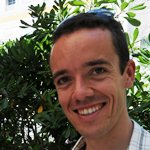 |
|
I am a Fellow at CERN currently working in the Atlas Tier0 development
team. At the moment I am involved
in the consolidation of the server infra-structure. I am responsible for
the migrating of all the services that we have scattered among several
servers to virtual machines, for that we are using Puppet to manage the
configuration and setup tools to handle the packaging (all the code is
python). I am also involved in
the testing new tools that might be used in the future to manage
services/display data e.g. graphite. Currently I do most of my work
using Python and Linux (using SLC). |
|
| |
|
Andre SAILER |
CERN, Geneva -
Switzerland |
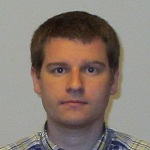 |
|
I studied physics at the Humboldt-University of Berlin. For my Diploma
Thesis I worked on the measurement of the luminosity spectrum of the
future international linear collider. For my Ph.D. thesis, I moved to
the CERN linear collider detector (PH-LCD) group and worked on the
simulation of beam-induced backgrounds in a detector for the compact
linear collider in order to estimate the background, and improve the
detector design. I was also responsible for maintenance of half of the
simulation and reconstruction software used for the CLIC detector
conceptual design report. I have now started as a CERN fellow in the
PH-LCD group, where I continue to work on the detector design, and the
simulation and reconstruction tools. |
|
| |
|
Natalia SAVDEROVA |
St.Petersburg State
Politechnical University - Russia |
 |
|
I
am a first year student of master's program at the Experimental Nuclear
Physics Department of St. Petersburg State Polytechnical University.
I am doing a research in the field of ultrarelativistic heavy ion
collisions, particularly products emerging from these processes. My
responsibilities include acquisition, analysis and interpretation of the
experimental data from PHENIX (RHIC, BNL, USA). Currently I am involved
in the development of HARDPING (HARD Probe INteraction Generator), which
describes hadron production in lepton-nucleus interactions at
high-energies within the framework of Monte Carlo methods. A wide range
of effects, such as formation length, energy loss and multiple
rescattering of produced hadrons is implemented into HARDPING.OS:
Windows, Linux. Programming: C/C++, FORTRAN, Pascal. In my opinion,
science is a challenge and only challenge makes our life interesting. |
|
| |
|
Iwona SPUTOWSKA |
H. Niewodniczanski Institute of Nuclear Physics, Kraków
- Poland |
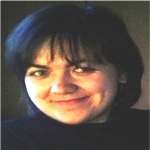 |
|
I am a PhD student at Henryk Niewodniczański Institute of Nuclear
Physics, Polish Academy of Sciences in Cracow, interested in
ultrarelativistic heavy ion collisions. My adventure with heavy ion
physics began with the analysis of the Pb+gas interactions at NA49
experiment at CERN, which I have successfully completed. Recently I have
started to work for the ALICE experiment. My current task aims at the
study of correlations for particles produced in heavy ion collisions. In
my work I have focused on measurements of moments of the multiplicity
distribution in rapidity bins. The analysis is performed for Pb+Pb
reaction for data from the ALICE detector at the LHC. In my free time I
am improving my skills in computer graphics. |
|
| |
|
Athanasios TOPALOUDIS |
CERN, Geneva -
Switzerland |
 |
|
I have been studying computer engineering at the Department of Computer
and Communication Engineering, University of Thessaly, Greece since
September 2004. I am about to graduate on October of this year, 2012.
During the last year, and specifically since October 2011, I have been
working for CERN at BE/BI-SW as a technical student, while writing my
bachelor thesis in parallel. My work and my thesis are about
server-client development in C/C++ and Java for the fast beam
measurements (FBCT) for the SPS and LHC rings. In more detail, my tasks
comprise of development of two C/C++ real time applications, processing
the data from the acquisition systems, development of several Java based
exert GUI interfaces and development of supporting system functions as
integration of the measurement system into the CERN control system. |
|
| |
|
Marco TRESCH |
University of Zürich
Switzerland |
 |
|
I just finished my Master thesis on the study of the zero-crossing point
of the forward-backward asymmetry of B->K* mu+ mu- at LHCb. This
zero-crossing point has a small theoretical uncertainty and is sensitive
for new physics. Before I have done measurements of the performance of
the silicon tracking modules for my Bachelor thesis. Currently I am
working on implementing the measurement method of the zero-crossing
point of the forward-backward asymmetry on other observables of B->K*mu+
mu-. |
|
| |
|
Christian URÍA EISMAR |
CERN, Geneva -
Switzerland |
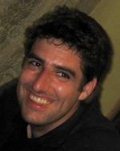 |
|
I am a telecommunication engineer currently working at CERN as a Project
Associate in the IT-OIS group. I have worked on the interconnection of a
Jabber-based instant messaging platform with Microsoft Lync, the
upcoming collaboration tool at CERN. At present I am involved in the
Agile Infrastructure project dealing with configuration management using
the Puppet open source tool. I have been at the IT department at CERN
previously: as a Summer Student in 2007, and as a Technical Student in
2008; where I worked on the improvement of the CPU efficiency of the
batch cluster, implementing in C a plugin for the LSF scheduler, which
dispatches physicists' jobs to the machines where they are executed. I
got experience in PHP and Bash scripting too. Afterwards I worked in a
Spanish call center managing an Asterisk-based telephone system. I have
a good knowledge of C++, C# and Java, and I am familiar with Ruby, Perl
and Python. |
|
| |
|
Lars WEUSTE |
Max Planck Institut für Physik,
München - Germany |
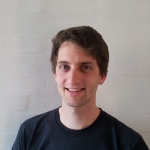 |
|
I got my diploma in physics at the Max Planck Institute for Physics in
Munich by developing a tracking algorithm searching for MIPs in hadronic
showers of the highly granular CALICE hadronic calorimeter prototype.
Here I also started my PhD thesis which is divided into two parts. One
part of my work was the measurement of squarks in a full detector
simulation of the Compact Linear Collider. This analysis was part of the
CDR released earlier this year. On the other hand, together with another
PhD student, I performed a small testbeam experiment at CERN measuring
the time structure of hadronic showers. It included the design of the
data acquisition, both in hard and in software from scratch. Both parts
of the thesis were done to a large extend using the C++ programming
language with either GCC/Linux or Visual Studio/Windows. In addition I
was using Python and Bash and I have some experience with Java, C# and
PHP. |
|
| |
|
Scott WOLIN |
University of Illinois at Urbana-Champaign - USA |
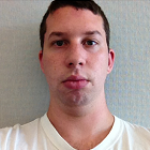 |
|
I am a PhD student at the University of Illinois at Urbana-Champaign
working with the PHENIX collaboration. My thesis topic is the
measurement of the double longitudinal asymmetry for \pi^{0} production
in polarized proton-proton collisions at RHIC. This allows one to access
the gluon polarization within a proton. I have also worked extensively
on a trigger upgrade which will greatly increase the sensitivity of my
measurement to unexplored kinematic regions. I typically perform my
analysis using Scientific Linux or Ubuntu operating systems and since
much of the analysis is ROOT based, I generally write my analysis
frameworks in C++ and C. I also use bash and perl, and in my free time I
enjoy coding in Java. |
|
| |
|
Dimitrios ZILASKOS |
STFC, Didcot – United Kingdom |
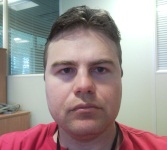 |
|
I am working since 2003 as systems administrator in grid clusters. Until
2011 I was administrating Grid clusters in the Aristotle University of
Thessaloniki in Greece, and since January 2012 I am working as linux
systems administrator at RAL Tier1. My experience includes Scientific
Linux/RHEL/CentOS 3,4,5,6 Ubuntu, Slackware, Fedora, Gentoo,
WindowsXP/Vista/7/2003/2008. From programming languages I am using shell
scripts/perl/python and I can also work with simple C/Fortran codes. My
focus is on large scale installation monitoring and maintenance of
Grid/HPC computing/storage/networking systems. Occasionally I may
interact with scientists to advise on improved ways to run their codes
on the grid. |
|
| |
|
|
